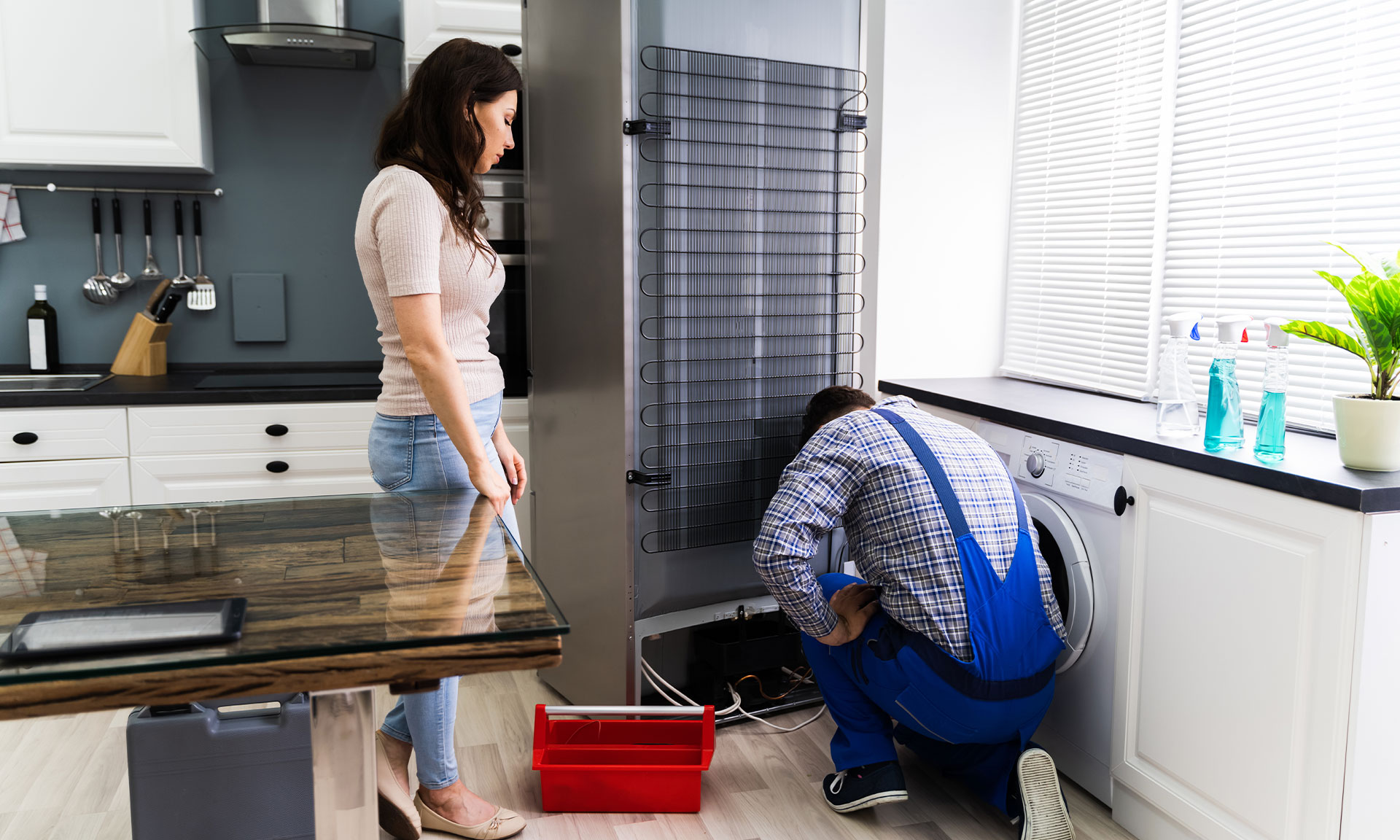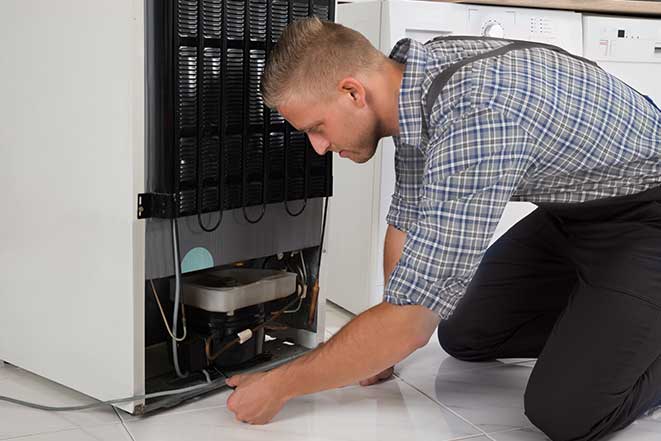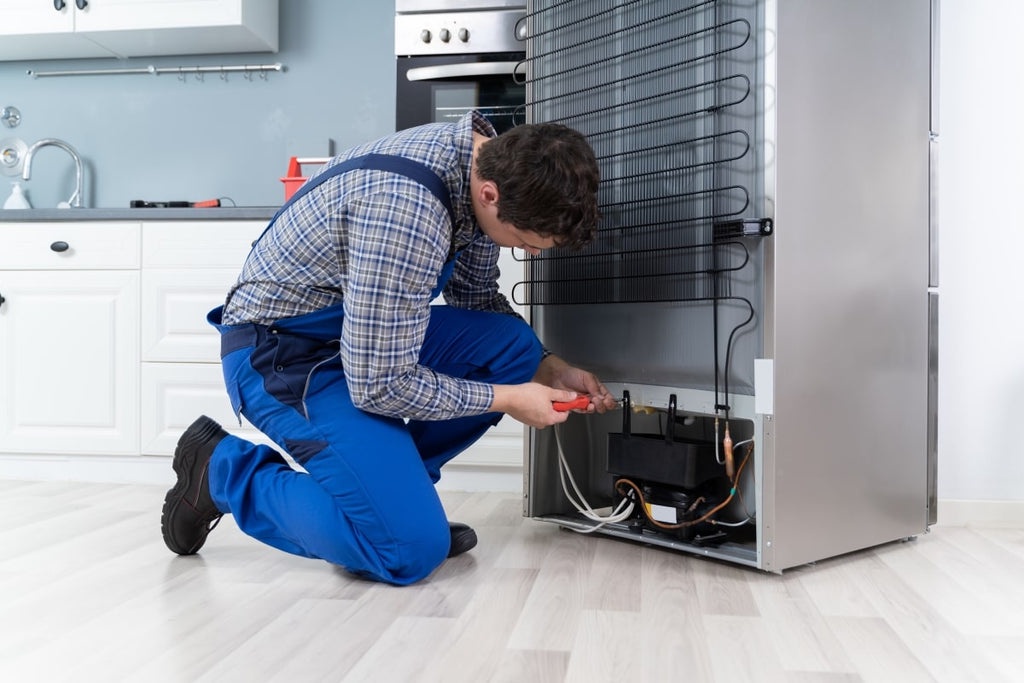A malfunctioning fridge freezer can be a source of frustration and inconvenience, especially when unexpected breakdowns occur. Fortunately, many common issues can be resolved without breaking the bank. In this ultimate guide, we'll explore the world of low-cost fridge freezer repairs, providing valuable insights and practical tips to help you troubleshoot and fix issues without draining your wallet.
1. Diagnosing the Problem:
Before embarking on any repair, it's essential to identify the root cause of the issue. Understanding the symptoms can help you narrow down the potential problems and target your efforts more effectively. Common problems include:

-
Inadequate Cooling: If your fridge freezer isn't keeping food cold enough, it may be due to a faulty thermostat, condenser coils, or a malfunctioning fan.
-
Excessive Frost Buildup: Ice accumulation can hinder the freezer's performance. This may result from a defective defrost timer, heater, or thermostat.
-
Strange Noises: Unusual sounds can indicate problems with the compressor, condenser fan, or other internal components.
2. Essential Tools for DIY Repairs:
Arming yourself with the right tools is crucial for successful fridge freezer repairs. You don't need an extensive toolkit, but a few essentials include:
-
Multimeter: A multimeter helps you measure voltage, current, and resistance, aiding in the diagnosis of electrical issues.
-
Screwdrivers: Different sizes and types of screwdrivers are necessary for accessing various components within the fridge freezer.
-
Wrench Set: A set of wrenches is useful for tightening or loosening nuts and bolts during the repair process.
-
Replacement Parts: Based on your diagnosis, it's wise to have common replacement parts on hand, such as thermostats, defrost timers, or fan motors.
3. Common DIY Repairs:
a. Replacing a Faulty Thermostat:
The thermostat controls the temperature inside the fridge freezer. If it's malfunctioning, it can lead to inadequate cooling. To replace it, follow these steps:
- Unplug the appliance.
- Locate the thermostat (usually near the back of the fridge).
- Remove the old thermostat by disconnecting wires and unscrewing it.
- Install the new thermostat, securing it in place with screws and reconnecting the wires.
b. Fixing Defrost Issues:
Excessive frost buildup can be a result of defrost system malfunctions. To address this:
- Check the defrost timer, heater, and thermostat for faults.
- Replace any defective components using your toolkit.
- Ensure the evaporator coils are free from ice, allowing for proper cooling.

c. Silencing Noisy Compressors:
Unusual noises from the compressor can be disruptive. To address this issue:
- Tighten any loose screws or bolts.
- Consider adding rubber pads or cushions to dampen vibrations.
- If the noise persists, it may indicate a more serious problem, and professional assistance may be required.
4. Regular Maintenance to Prevent Issues:
Prevention is key to avoiding future fridge freezer problems. Simple maintenance tasks can extend the lifespan of your appliance and reduce the likelihood of breakdowns. Consider the following:
-
Regular Cleaning: Keep the condenser coils, fans, and vents free from dust and debris to ensure optimal airflow.
-
Proper Temperature Settings: Set the temperature controls according to the manufacturer's recommendations to prevent overworking the compressor.
-
Check Door Seals: Ensure that the door seals are tight and free from damage. Loose or damaged seals can lead to cold air escaping and inefficient cooling.
5. When to Seek Professional Help:
While many fridge freezer issues can be resolved through DIY efforts, there are instances where professional assistance is necessary. Consider reaching out to a technician if:
- You're uncertain about the diagnosis.
- The repair involves complex electrical components.
- The appliance is still under warranty, and self-repair might void the warranty.
- Safety concerns arise during the repair process.
6. Budget-Friendly Tips for Repairing Refrigerant Leaks:
Refrigerant leaks are less common but can pose a serious threat to your appliance's functionality. If you suspect a leak, follow these budget-friendly steps:
-
Locate the Leak: Use a soapy water solution to identify the source of the leak by observing bubbles forming at the point of leakage.
-
Temporary Patch: For small leaks, consider using epoxy or putty as a temporary solution until a professional can address the issue permanently.
-
Professional Assistance: Refrigerant-related issues often require specialized knowledge and equipment. If you're not comfortable or experienced in handling refrigerants, it's best to leave the repair to a qualified technician.
Conclusion:
In conclusion, low-cost fridge freezer repairs are often within reach, provided you approach the troubleshooting process systematically and armed with the right tools. With the guidance provided in this ultimate guide, you can save money, extend the life of your appliance, and minimize the inconvenience of unexpected breakdowns. Remember, when in doubt, seeking professional help ensures the safety and longevity of your fridge freezer.


No comments yet